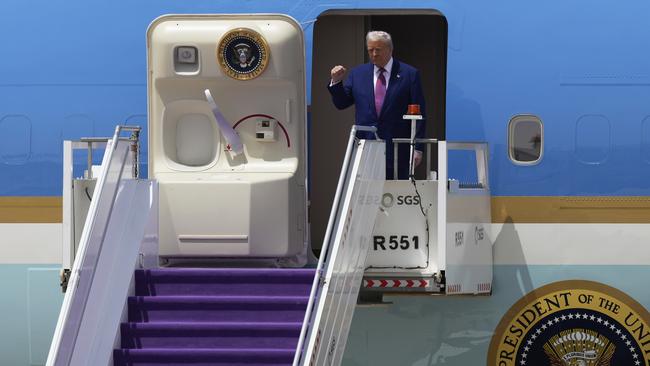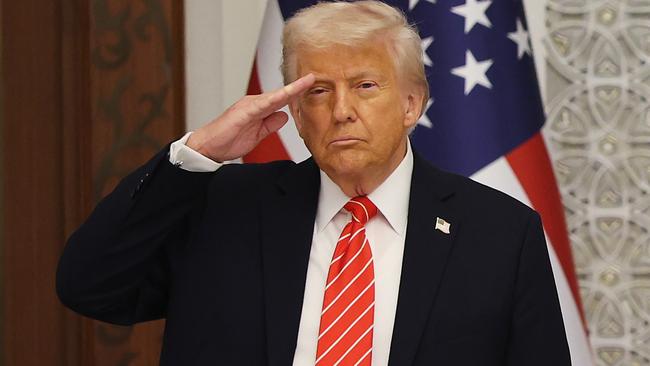Opportunities about in a rebounding sharemarket — it’s all about price
The sharemarket was waiting to rebound once Donald Trump made the right move — but it remains an expensive market.

This week US President Donald Trump has executed something of an about-face on tariffs on Chinese imports, and predictably the market extended its celebration.
The US-China tariff agreement announced on May 12, marked a significant de-escalation in trade tensions. Both nations agreed to a 90-day pause on tariff increases, reducing US tariffs on Chinese imports from 145 per cent to 30 per cent and Chinese tariffs on US goods from 125 per cent to 10 per cent.
In turn, Wall Street bounced: If you remember, a fortnight ago, I wrote the market rally “is not a sign of irrational exuberance but a reflection of investors pricing in a potential policy shift. Markets often rebound after sentiment shocks when uncertainty peaks and the worst-case scenario fades.”
Well, at the time of writing, the S&P 500 is less than 4 per cent from its all-time highs. But with gains come higher multiples, and now the S&P 500’s price-earnings ratio sits at 20.4 times one year forward earnings, which is higher than at any other time in the last 23 years, except for the Covid-19 period and earlier this year, right before the market corrected.
By themselves, however, high PE ratios are meaningless. They don’t trigger corrections, and they aren’t predictive. What they do, of course, is offer some insight into relative future returns.
The higher the price you pay (higher PEs), the lower your future return. When PEs were this high in the past, annual returns over the subsequent 10 years were in the low-to-mid single digits. Add to that Trump-related volatility, and investing in the S&P 500 for single-digit returns seems hardly compelling.
Trump’s 90-day pause of the most egregious versions of tariffs on Chinese imports may go some way to reigniting shipping and trade between the two countries, but uncertainty about what comes after the pause will still hamper planning and capital expenditure intentions. Think of the US economy recovering from a broken leg and now limping around on crutches. It’s not ready to run a 100m sprint!
However, that’s not enough for the Federal Reserve to cut rates. Federal Reserve chairman Jerome Powell used “wait and see” 11 times in his recent press conference, signalling no rate cuts before mid-2025.
This do-nothing approach may effectively be a tightening policy, and risks the need for bigger, belated rate cuts that might not prevent a downturn.

Some analysts are less cautious and believe the new deal (if that’s what it is) is a huge win for the bulls. They argue the temporary tariff cuts are better than expected and signal the commencement of broader negotiations that will result in declining tariffs over coming months as deal talks progress. They also argue tariff reductions would squeeze the “sell America” narrative, boosting US assets. While the deal’s 90-day duration might temper the optimism, the bulls view it as a step toward de-escalation, probably reducing near-term recession risks.
The bears warn the tariff pause is not a definitive solution, adding that even with US tariffs reduced to 30 per cent, they remain “negative” for economic growth. The potential for renewed tensions also remains and economic data might soon show weakening fundamentals overshadowing the tariff relief. It’s worth remembering that the short-lived 2018-2019 US- China trade truce failed to prevent further escalation, and in 2018 the S&P 500 fell 20 per cent between September and Christmas Eve.
Indeed, what, if anything, does the US get out of the deal, other than lowering the tariffs Trump raised in the first place?
So, what should investors do?
Don’t try to guess the market’s next move. Volatility creates openings, and history shows that quality companies often shine in tough times. Think back to 2018-2019: despite tariff chaos, sectors such as tech and consumer staples held firm due to strong fundamentals. Today, focus on businesses with solid balance sheets, limited reliance on Chinese imports, or the ability to pass on costs without losing customers.
If things get worse, the Fed will probably step in, providing another excuse for a market rebound. Clear evidence of economic pain would force the Fed’s hand, which investors would cheer.
Meanwhile Warren Buffett recently stepped back from his role as Berkshire Hathaway’s CEO. But perhaps tellingly he said he’ll hang around, ready to advise in “periods of great opportunity”. That statement, along with more the $US300bn in cash and his approach to betting on strong businesses during chaos, is the model approach for investors today.
The strategy is simple: keep investing regularly in high-quality companies with durable advantages and steady earnings. These firms don’t stay cheap for long, even in rocky markets. Keep some cash handy to snap up bargains during sell-offs. The mix of tariffs, Fed policy and market nerves will test patience, but it will reward those who remain focused.
Ignore short-term noise and stick to what works: quality, discipline, and readiness to act when others panic. That’s how you turn uncertainty into opportunity.
Roger Montgomery is founder and chief investment officer at Montgomery Investment Management






To join the conversation, please log in. Don't have an account? Register
Join the conversation, you are commenting as Logout